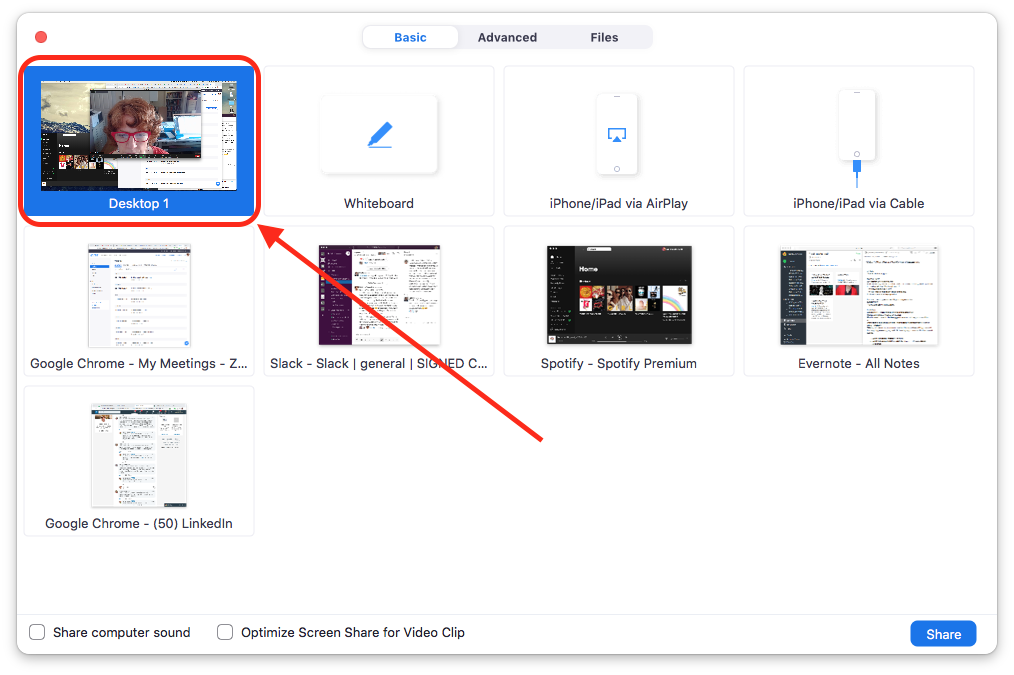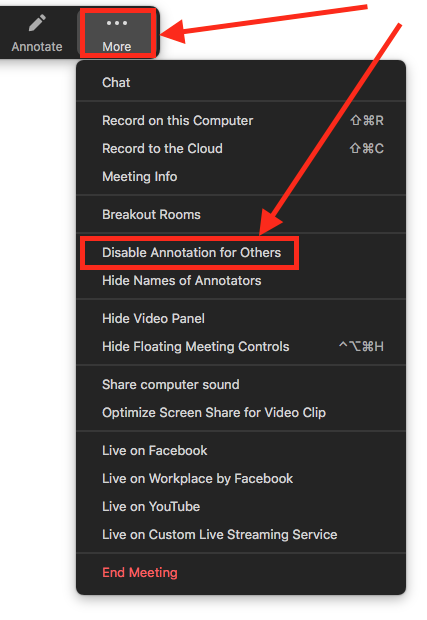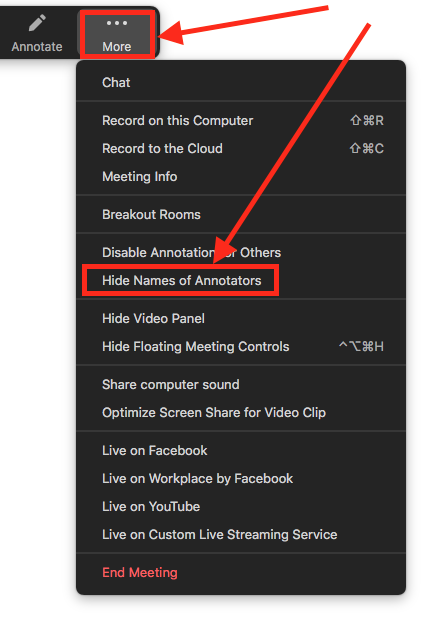As Host, when you click the Share Screen icon at the bottom of your Zoom window, you have the option to share your entire desktop, the Zoom Whiteboard, or any application or browser window you have open on your computer.
![]()
If you select an application or browser, your participants will only see that application/browser, and won’t see the rest of your desktop, but beware that if you select the “Desktop 1” option, whatever you have open on your desktop, and any notifications that appear, will be visible to your meeting participants.

If you want to share a slide presentation, have it open and it will appear as an option when you click Share Screen.

Once you share your screen, click Annotate to find the annotation toolbar.

NOTE: Your participants will see a different view. They’ll need to click View Options > Annotate to open up the toolbar of annotation tools.
Annotation Tools
Let’s go over these tools, which are the same, whether you’re annotating a document or in the whiteboard.
Mouse: this does the same thing as your mouse

Select: selects objects you’ve already create with the other tools in the toolbar

Text: click, then type. Format your type using the Format tool to change color and size, and apply bold or italic

Draw:

- solid line (change the color and line width in the Format tool)
- highlight (thicker transparent line)
- diamond outline
- straight line
- arrow
- double-pointed arrow
- outline rectangle (hold the shift key = square)
- transparent rectangle (hold the shift key = square)
- solid rectangle (hold the shift key = square)
- round oval (hold the shift key = circle)
- transparent oval (hold the shift key = circle)
- solid oval (hold the shift key = circle)
Stamp:

- blue arrow
- gold star
- green check mark
- red heart
- red x
- blue ?
Spotlight:

- Red laser dot
- Arrow with name inside
Eraser: click to erase an object

Undo: click to undo your last action
Redo: click to redo your last action

Clear: clear all drawings, your drawings, or viewers’ drawings

Save: save annotation as PNG or PDF

Other Important Options
Under More (under the ••• in the top menu) you’ll find an option to Disable Annotation for Others. If people start getting a little out of control with their annotating, this is your “nuclear option” for shutting them down.

Also, you have the option to Hide Names of Annotators. As people annotate, their names appear as little flags as their cursors move around, which can be annoying, or even problematic, if your activity relies on anonymity. So keep that one in your pocket!





